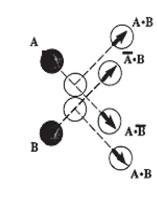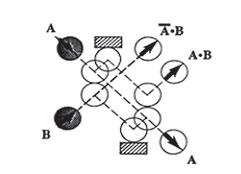The Singularity Is Near: When Humans Transcend Biology (100 page)
Read The Singularity Is Near: When Humans Transcend Biology Online
Authors: Ray Kurzweil
Tags: #Non-Fiction, #Fringe Science, #Retail, #Technology, #Amazon.com

Disclosure: The author is an adviser to Audience.
39
. U.S. Patent Application 20030095667, U.S. Patent and Trademark Office, May 22, 2003.
40
. The Medtronic MiniMed closed-loop artificial pancreas currently in human clinical trials is returning encouraging results. The company has announced that the device should be on the market within the next five years. Medtronic news release, “Medtronic Supports Juvenile Diabetes Research Foundation’s Recognition of Artificial Pancreas as a Potential ‘Cure’ for Diabetes,” March 23, 2004,
http://www.medtronic.com/newsroom/news_2004323a.html
. Such devices require a glucose sensor, an insulin pump, and an automated feedback mechanism to monitor insulin levels (International Hospital Federation, “Progress in Artificial Pancreas Development for Treating Diabetes,”
http://www.hospitalmanagement.net/informer/technology/tech10
). Roche is also in the race to produce an artificial pancreas by 2007. See
http://www.roche.com/pages/downloads/science/pdf/rtdcmannh02-6.pdf
.
41
. A number of models and simulations have been created based on analyses of individual neurons and interneuronal connections. Tomaso Poggio writes, “One view of the neuron is that it is more like a chip with thousands of logical-gates-equivalents rather than a single threshold element.” Tomaso Poggio, private communication to Ray Kurzweil, January 2005.
See also T. Poggio and C. Koch, “Synapses That Compute Motion,”
Scientific American
256 (1987): 46–52.
C. Koch and T. Poggio, “Biophysics of Computational Systems: Neurons, Synapses, and Membranes,” in
Synaptic Function
, G. M. Edelman, W. E. Gall, and W. M. Cowan, eds. (New York: John Wiley and Sons, 1987), pp. 637–97.
Another set of detailed neuron-level models and simulations is being created at the University of Pennsylvania’s Neuroengineering Research Lab based on reverse engineering brain function at the neuron level. Dr. Leif Finkel, head of the laboratory, says, “Right now we’re building a cellular-level model of a small piece of visual cortex. It’s a very detailed computer simulation which reflects with some accuracy at least the basic operations of real neurons. [My colleague Kwabena Boahen] has a chip that accurately models the retina and produces output spikes that closely match real retinae.” See
http://nanodot.org/article.pl?sid=01/12/18/1552221
.
Reviews of these and other models and simulations at the neuron level indicate that an estimate of 10
3
calculations per neural transaction (a single transaction involving signal transmission and reset on a single dendrite) is a reasonable upper bound. Most simulations use considerably less than this.
42
. Plans for Blue Gene/L, the second generation of Blue Gene computers, were announced in late 2001. The new supercomputer, planned to be fifteen times faster than today’s supercomputers and one twentieth the size, is being built jointly by the National Nuclear Security Agency’s Lawrence Livermore National Laboratory and IBM. In 2002, IBM announced that open-source Linux had been chosen as the operating system for the new supercomputers. By July 2003, the innovative processor chips for the supercomputer, which are complete systems on chips, were in production. “Blue Gene/L is a poster child for what is possible with the system-on-a-chip concept. More than 90 percent of this chip was built from standard blocks in our technology library,” according to Paul Coteus, one of the managers of the project (Timothy Morgan, “IBM’s Blue Gene/L Shows Off Minimalist Server Design,”
The Four Hundred
,
http://www.midrangeserver.com/tfh/tfh120103-story05.html
). By June 2004, the Blue Gene/L prototype systems appeared for the first time on the list of top ten supercomputers. IBM press release, “IBM Surges Past HP to Lead in Global Supercomputing,”
http://www.research.ibm.com/bluegene
.
43
. This type of network is also called peer-to-peer, many-to-many, and “multihop.” In it, nodes in the network can be connected to all the other nodes or to a subset, and there are multiple paths through meshed nodes to each destination. These networks are highly adaptable and self-organizing. “The signature of a mesh network is that there is no central orchestrating device. Instead, each node is outfitted with radio communications gear and acts as a relay point for other nodes.” Sebastian Rupley, “Wireless: Mesh Networks,”
PC Magazine
, July 1, 2003,
http://www.pcmag.com/article2/0,1759,1139094,00.asp
; Robert Poor, “Wireless Mesh Networks,” Sensors Online, February 2003,
http://www.sensorsmag.com/articles/0203/38/main.shtml
; Tomas Krag and Sebastian Büettrich, “Wireless Mesh Networking,” O’Reilly Wireless DevCenter, January 22, 2004,
http://www.oreillynet.com/pub/a/wireless/2004/01/22/
wirelessmesh.html
.
44
. Carver Mead, founder of more than twenty-five companies and holder of more than fifty patents, is pioneering the new field of neuromorphic electronic systems, circuits modeled on the brain and nervous system. See Carver A. Mead, “Neuromorphic Electronic Systems,”
IEEE Proceedings
78.10 (October 1990): 1629–36. His work led to the computer touch pad and the cochlear chip used in digital hearing aids. His 1999 start-up company Foveon makes analog image-sensors that imitate the properties of film.
45
. Edward Fredkin, “A Physicist’s Model of Computation,” Proceedings of the Twenty-sixth Recontre de Moriond, Texts of Fundamental Symmetries (1991): 283–97,
http://digitalphilosophy.org/physicists_model.htm
.
46
. Gene Frantz, “Digital Signal Processing Trends,”
IEEE Micro
20.6 (November/December 2000): 52–59,
http://csdl.computer.org/comp/mags/mi/2000/06/m6052abs.htm
.
47
. In 2004 Intel announced a “right hand turn” switch toward dual-core (more than one processor on a chip) architecture after reaching a “thermal wall” (or “power
wall”) caused by too much heat from ever-faster single processors:
http://www.intel.com/employee/retiree/circuit/righthandturn.htm
.
48
. R. Landauer,“Irreversibility and Heat Generation in the Computing Process,”
IBM Journal of Research Development
5 (1961): 183–91,
http://www.research.ibm.com/journal/rd/053/ibmrd0503C.pdf
.
49
. Charles H. Bennett, “Logical Reversibility of Computation,”
IBM Journal of Research Development
17 (1973): 525–32,
http://www.research.ibm.com/journal/rd/176/ibmrd1706G.pdf
; Charles H. Bennett, “The Thermodynamics of Computation—a Review,”
International Journal of Theoretical Physics
21 (1982): 905–40; Charles H. Bennett, “Demons, Engines, and the Second Law,”
Scientific American
257 (November 1987): 108–16.
50
. Edward Fredkin and Tommaso Toffoli, “Conservative Logic,”
International Journal of Theoretical Physics
21 (1982): 219–53,
http://digitalphilosophy.org/download_documents/
ConservativeLogic.pdf
. Edward Fredkin, “A Physicist’s Model of Computation,” Proceedings of the Twenty-sixth Recontre de Moriond, Tests of Fundamental Symmetries (1991): 283–97,
http://www.digitalphilosophy.org/physicists_model.htm
.
51
. Knight, “Digital Image Stored in Single Molecule,” referring to Khitrin et al., “Nuclear Magnetic Resonance Molecular Photography”; see note 30 above.
52
. Ten billion (10
10
) humans at 10
19
cps each is 10
29
cps for all human brains; 10
42
cps is greater than this by ten trillion (10
13
).
53
. Fredkin, “Physicist’s Model of Computation”; see notes 45 and 50 above.
54
. Two such gates are the Interaction Gate, a two-input, four-output universal, reversible-logic gate

and the Feynman Gate, a two-input, three-output reversible, universal-logic gate.

Both images are from ibid., p. 7.
55
. Ibid., p. 8.
56
. C. L. Seitz et al., “Hot-Clock nMOS,”
Proceedings of the 1985 Chapel Hill Conference on VLSI
(Rockville, Md.: Computer Science Press, 1985), pp. 1–17,
http://caltechcstr.library.caltech.edu/archive/00000365
; Ralph C. Merkle,“Reversible Electronic Logic Using Switches,”
Nanotechnology
4 (1993): 21–40; S. G. Younis and T. F. Knight, “Practical Implementation of Charge Recovering Asymptotic Zero Power CMOS,”
Proceedings of the 1993 Symposium on Integrated Systems
(Cambridge, Mass.: MIT Press, 1993), pp. 234–50.
57
. Hiawatha Bray, “Your Next Battery,”
Boston Globe
, November 24, 2003,
http://www.boston.com/business/technology/articles/2003/11/24/
your_next_battery
.
58
. Seth Lloyd, “Ultimate Physical Limits to Computation,”
Nature
406 (2000): 1047–54.
Early work on the limits of computation was done by Hans J. Bremermann in 1962: Hans J. Bremermann, “Optimization Through Evolution and Recombination,” in M. C. Yovits, C. T. Jacobi, C. D. Goldstein, eds.,
Self-Organizing Systems
(Washington, D.C.: Spartan Books, 1962), pp. 93–106.
In 1984 Robert A. Freitas Jr. built on Bremermann’s work in Robert A. Freitas Jr., “Xenopsychology,”
Analog
104 (April 1984): 41–53,
http://www.rfreitas.com/Astro/Xenopsychology.htm#SentienceQuotient
.
59
. π × maximum energy (10
17
kg × meter
2
/second
2
) / (6.6×10
–34
) joule-seconds = ~ 5 × 10
50
operations/second.
60
. 5 × 10
50
cps is equivalent to 5 × 10
21
(5 billion trillion) human civilizations (each requiring 10
29
cps).
61
. Ten billion (10
10
) humans at 10
16
cps each is 10
26
cps for human civilization. So 5 × 10
50
cps is equivalent to 5 × 10
24
(5 trillion trillion) human civilizations.
62
. This estimate makes the conservative assumption that we’ve had ten billion humans for the past ten thousand years, which is obviously not the case. The actual number of humans has been increasing gradually over the past to reach about 6.1 billion in 2000. There are 3 × 10
7
seconds in a year, and 3 × 10
11
seconds in ten thousand years. So, using the estimate of 10
26
cps for human civilization, human thought over ten thousand years is equivalent to certainly no more than 3 × 10
37
calculations. The ultimate laptop performs 5 × 10
50
calculations in one second. So simulating ten thousand years of ten billion humans’ thoughts would take it about 10
–13
seconds, which is one ten-thousandth of a nanosecond.
